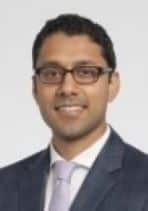This month the PNA Medical Corner showcases an article co-authored by a member of the PNA, Dr. Varun Kshettry of the Cleveland Clinic. The study concludes that the use of fascia lata in challenging cases of skull base reconstruction is highly effective with few side effects for cases of craniopharyngioma, meningioma and more.
Link:
Am J Rhinol Allergy
. 2023 Apr 20;19458924231170955.
doi: 10.1177/19458924231170955. Online ahead of print.
Fascia Lata: Another Workhorse for Complex Skull Base Reconstruction
• PMID: 37081750 DOI: 10.1177/19458924231170955
Abstract
Background: Multiple methods exist for skull base reconstruction of defects created by expanded endonasal approaches. While the nasoseptal flap (NSF) has been well established as the workhorse of mucosal reconstruction in complex skull base defects in multi-layered closures, a variety of options exist for the inner layer of multilayer reconstruction, including fascia lata (FL).
Objective: To present our experience and outcomes in utilizing FL in multiple ways to reconstruct a wide variety of complex skull base defects.
Methods: Retrospective review was performed from May 2017 to February 2022 to identify 50 consecutive patients who underwent endoscopic skull base reconstruction using FL.
Results: FL was employed for reconstruction in 50 patients included in the study: 37 undergoing primary expanded endonasal skull base surgery and 13 revision cases. A wide range of complex pathology was treated, with meningioma and craniopharyngioma being the two most common. FL was utilized as a “button” graft (34/50, 68.0%), free graft inlay/onlay (13/50, 26.0%), and as a button graft combined with onlay (3/50, 6.0%). Expanded surgery defects addressed included tuberculum sella/sphenoid planum (36/50, 72.0%), clivus (6/50, 12.0%), and cribriform/planum (8/50, 16.0%). Successful reconstruction with fascia lata was accomplished in 46/50 cases (92%), with only 4 cases (8%) requiring revision for post-op CSF leak. Donor-site complications were rare with only 1 case (2.0%) of post-op seroma.
Conclusion: FL, usually with NSF, offers a versatile option for the reconstruction of challenging defects with excellent outcomes and minimal morbidity. FL is emerging as a workhorse for reconstruction of the inner layer of complex skull base defects.
Keywords: CSF leak; endoscopic skull base surgery; fascia lata; skull base reconstruction.

Dr. Varun Kshettry
